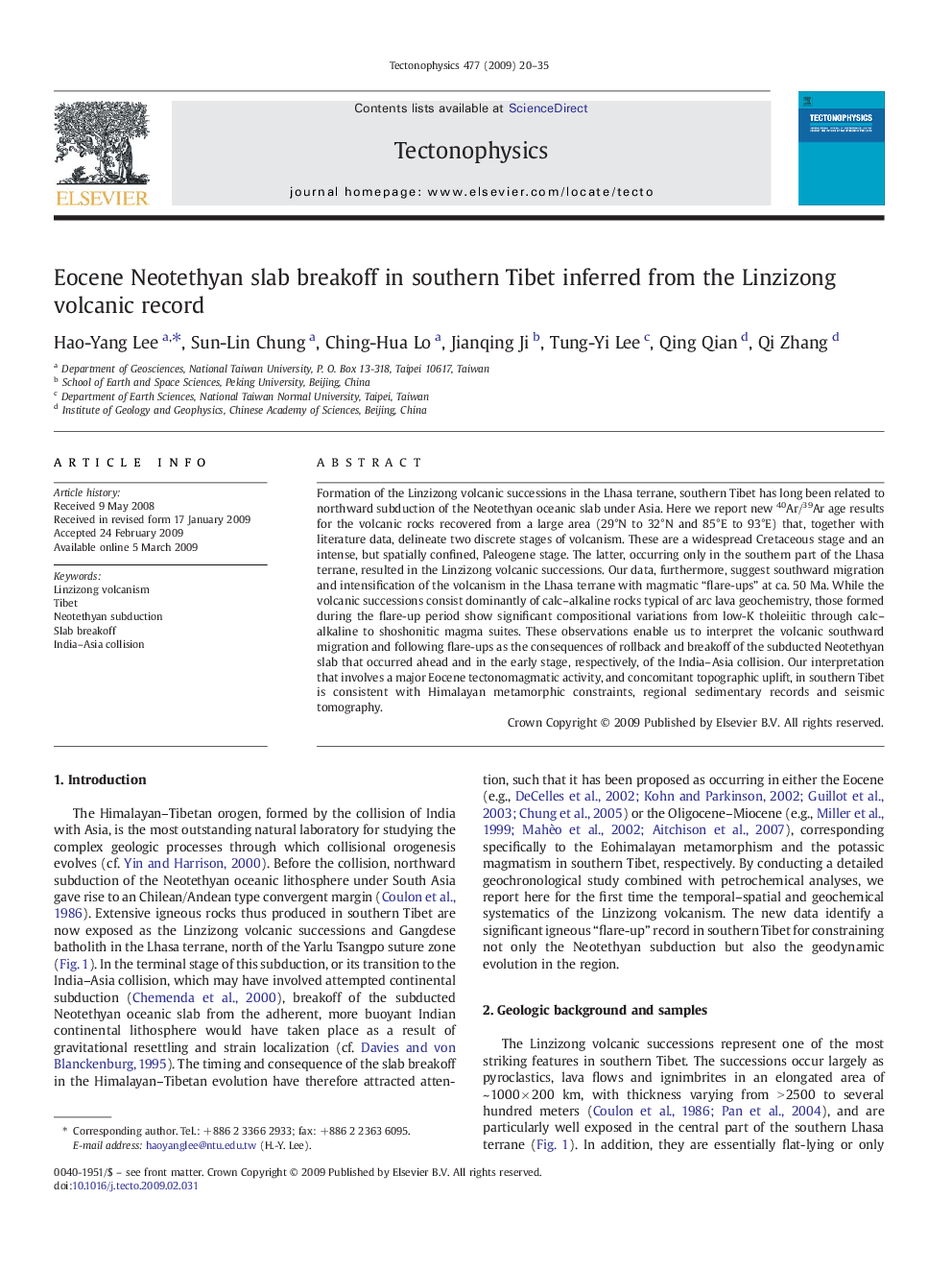| Article ID | Journal | Published Year | Pages | File Type |
|---|---|---|---|---|
| 4693876 | Tectonophysics | 2009 | 16 Pages |
Formation of the Linzizong volcanic successions in the Lhasa terrane, southern Tibet has long been related to northward subduction of the Neotethyan oceanic slab under Asia. Here we report new 40Ar/39Ar age results for the volcanic rocks recovered from a large area (29°N to 32°N and 85°E to 93°E) that, together with literature data, delineate two discrete stages of volcanism. These are a widespread Cretaceous stage and an intense, but spatially confined, Paleogene stage. The latter, occurring only in the southern part of the Lhasa terrane, resulted in the Linzizong volcanic successions. Our data, furthermore, suggest southward migration and intensification of the volcanism in the Lhasa terrane with magmatic “flare-ups” at ca. 50 Ma. While the volcanic successions consist dominantly of calc–alkaline rocks typical of arc lava geochemistry, those formed during the flare-up period show significant compositional variations from low-K tholeiitic through calc–alkaline to shoshonitic magma suites. These observations enable us to interpret the volcanic southward migration and following flare-ups as the consequences of rollback and breakoff of the subducted Neotethyan slab that occurred ahead and in the early stage, respectively, of the India–Asia collision. Our interpretation that involves a major Eocene tectonomagmatic activity, and concomitant topographic uplift, in southern Tibet is consistent with Himalayan metamorphic constraints, regional sedimentary records and seismic tomography.
